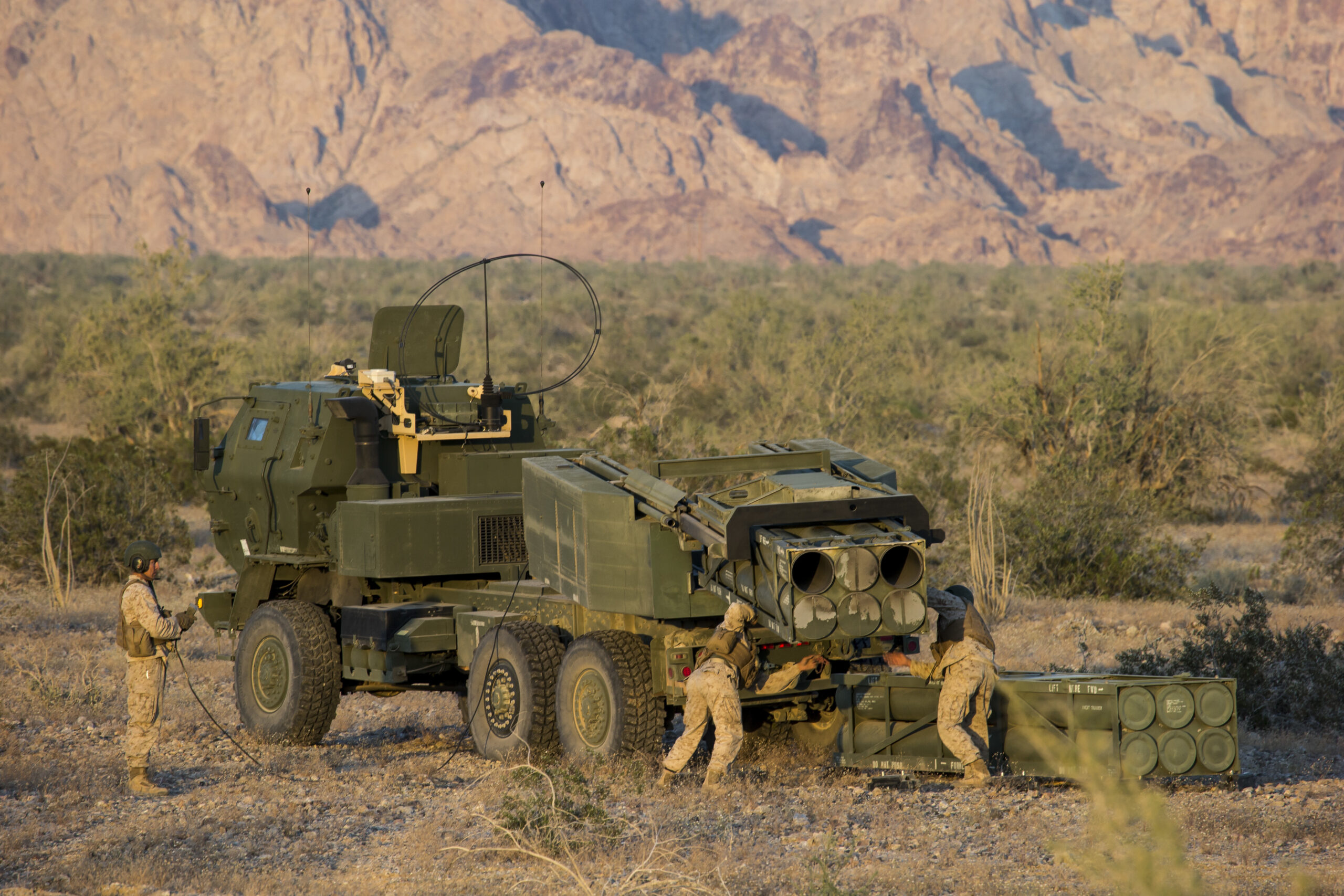Lockheed Martin’s Missiles and Fire Control (MFC) business area is absorbing the demand from the US military and allied countries for greater munitions stock in light of the war in Ukraine.
Briefing journalists in London on 29 June 2023, Tim Cahill, executive vice president for the MFC business, noted that the war in Ukraine “is a very human tragedy by any measure, [but] if there’s one thing that’s happened that’s positive, I think it has woken up the world to say that security is important and something we need to invest in”.
Cahill described MFC as being “on the pointy end of the spear”, given its portfolio, which includes the M142 High Mobility Artillery Rocket System (HIMARS), Guided Multiple Launch Rocket System (GMLRS) rounds for HIMARS and the M270 MLRS, the Patriot Advanced Capability-3 air defence missile, FGM-148 Javelin anti-tank missile, AGM-158C Long Range Anti-Ship Missile (LRASM) and AGM-158 Joint Air-to-Surface Standoff Missile JASSM).
Looking at the increased demand for war stocks of munitions, Cahill said, “I think it’s a pretty clear that there’s a recognition, certainly within the US Department of Defense and … among many [armed forces] around the world, that, whatever the level of stocks that we had, it was not enough. And Ukraine has demonstrated that a protracted conflict of this nature is going to use a tremendous amount of munitions.

“Part of deterrence is to be prepared and to let your adversary know that you’re not going to go down easy, that they’re going to be facing exceptional technology, exceptional firepower, and so we’re supporting countries in that regard.”
Detailing the extent of MFC’s ramp-up since the start of the Ukraine war, Cahill said that production of GMLRS rounds had gone from 10,000 per year to 14,000 per year, PAC-3 Patriot rounds are moving to above 550 a year, Javelin missiles are going from 2,000 to 3,500-3,600 per year, and HIMARS systems are going up to 96 per year.
“HIMARS production was originally in the 20s,” said Cahill. “We quickly were able to go to 48 by just turning on the supply chain; that was quick. But there’s capitalisation required to go to 96.”
Cahill explained that Lockheed Martin acted ahead of the US government on the issue by investing hundreds of millions of dollars to boost MFC’s production rates, although all the of ramp-ups he detailed are now under contract.
It normally takes two years to double production, he said, noting that “You’re only as fast as your slowest company [in the supply chain].”
With regard to scaling up its workforce, Cahill said of MFC, “We’ve still been able to, generally speaking, get all the people that we need to do the work that needs to get done.” Noting that MFC has around 20,000 employees worldwide, Cahill said that around 12,000 of these have been with the company five years or less and that, of this number, most are young employees – “not all engineers but a majority of those are in technical disciplines”.
“I don’t want to downplay the challenge,” he said, “but to date we have been – with a lot of hard work – pretty successful in getting the folks that we need to do the job.”
Of its UK operations, Cahill said that its Amptill site in Bedfordshire will continue to be the “crown jewel” of Lockheed Martin’s UK operations and the “launch pad” for any UK-based programmes.
One of those could be the British Army’s Mobile Fires Platform (MFP) requirement to replace its fleet of AS90 self-propelled howitzer (SPHs), for which Lockheed Martin UK is teamed with Hanwha Defense as the South Korean company offers its K9 Thunder tracked SPH for the requirement. However, although the acquisition of an initial 14 BAE Systems Archer 155 mm wheeled SPHs was announced in March 2023 as an interim solution to replace AS90s gifted to Ukraine, no request for proposals for the MFP requirement proper is currently in sight.
Peter Felstead












